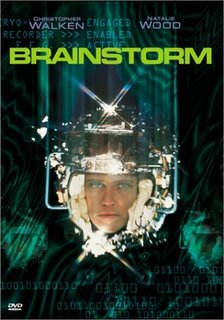How The Other Half Lives
My trips to Los Angeles for IFC are typically so busy I don't get time to take in much of the local flavor, and what I do see is often of the hipster-scenester variety. But last week, travelling solo to La-La Land, I found myself with several free nights on my hands.
Staying just around the corner from Hollywood Boulevard and the famous Chinese Theatre, I thought I would take the tourist route and see something there. Unfortunately, the theatre was hosting the premiere of Poseidon, so I had to take my business elsewhere.
 A few blocks away, sits a less famous contemporary of the Chinese, Grauman's Egyptian Theatre. As it turns out — and I did not know this as I casually walked up to the theater — the Egyptian is now the repertory arm of the American Cinematheque. It's basically the West Coast version of Film Forum, except the screen is bigger, the seats newer (not to mention stacked, stadium-style), and the air significantly less smelly.
A few blocks away, sits a less famous contemporary of the Chinese, Grauman's Egyptian Theatre. As it turns out — and I did not know this as I casually walked up to the theater — the Egyptian is now the repertory arm of the American Cinematheque. It's basically the West Coast version of Film Forum, except the screen is bigger, the seats newer (not to mention stacked, stadium-style), and the air significantly less smelly.Discovering the Egyptian was a revelation. Though you can't walk a block in downtown Los Angeles without being smacked in the face by modern Hollywood, most of the city as I'd experienced it felt strangely disconnected from film history (and why not? It's all about what's opening this week). But the Egyptian truly celebrates what is old and great about the movies.
Completely by accident, I wandered up to the Egyptian minutes before the evening's attraction, a screening of an ultra-rare original 70mm print of 1983's science-fictioner starring Christopher Walken, Brainstorm.
 The film is largely forgotten, and it's easy to see why; the last hour of the film is a big boring mess, and the first hour is so visually bold as to border on the experimental. The audience for this movie is limited to neuroscientists and aspect ratio dorks.
The film is largely forgotten, and it's easy to see why; the last hour of the film is a big boring mess, and the first hour is so visually bold as to border on the experimental. The audience for this movie is limited to neuroscientists and aspect ratio dorks.Walken plays a scientist who creates a technology that works like virtual reality: someone wears a special helmet while performing an activity — riding a rollercoaster, eating a steak, having sex — and the helmet records the experience, and another person can put on a different helmet, and experience that activity as if they themselves had participated in it. To visualize the technology, director Douglas Trumbull uses the unusual device of shifting aspect ratios: regular scenes are presented in 1.85:1, but the moments where the characters use the V.R. helmet are presented in brain-melting 2.35:1 70mm. Since the machine replicates perception, all of the sequences inside the helmet are done in POV, and on the large screen, the result is sort of an IMAX experience before IMAX even existed. The device itself poses all sorts of fascinating philosophical questions, and for the first hour, Brainstorm is atypically interested in exploring those dimensions. The most powerful scene is one in which Walken and his ex-wife (played by Natalie Wood, in her final role) rekindle their relationship by using the helmet to let each other see themselves through their partner's eyes. They see each other as the other sees them, and the power of that recognition reignites their passion. It's a creative use of a creative concept, and a marvelously romantic sequence.
Sitting in the Egyptian, watching this trippy movie on what the host said was the only print of its kind (and what a beautiful print it was), on a monstrous screen just as Trumbull intended, I had one of those shivers run over my body when I realized just how lucky and grateful I was to get to see the film.
 The next night, I was lucky enough to have another at Los Angeles' ArcLight Cinemas.
The next night, I was lucky enough to have another at Los Angeles' ArcLight Cinemas.The ArcLight is, in every way, a high-end moviegoing experience. You have to pay a couple extra dollars, but you get plenty of bang for your buck. Instead of having to show up early to fight for the best possible seat, each ticket at the ArcLight comes with an assigned seat, and when you arrive at your specific theater, an usher shows you to your seat. The ushers, by the way, introduce the film, then remain in the theater for the duration of the film; if there are any visual or audio problems they instruct you to alert them immediately and they will correct it. The film starts promptly at the showtime after a few trailers and NO commercials, which is marvelous. Plus, the seats are, according to Arclight's website, "3 inches wider than current megaplex standards, with 6 inches more legroom. Even the retractable armrests are “double-wide.” Tremendous.
I saw American Dreamz at the Arclight. The film itself was completely unremarkable (frankly the film itself was completely terrible, but whatever), but the atmosphere was dynamic and exciting. These days, every moviegoing experience is exactly the same. The Egyptian and the Arclight reminded me that going to the movies should be special and unique. We have it pretty good going to the movies in Manhattan, but the City of the Angels may have it even better.

0 Comments:
Post a Comment
<< Home